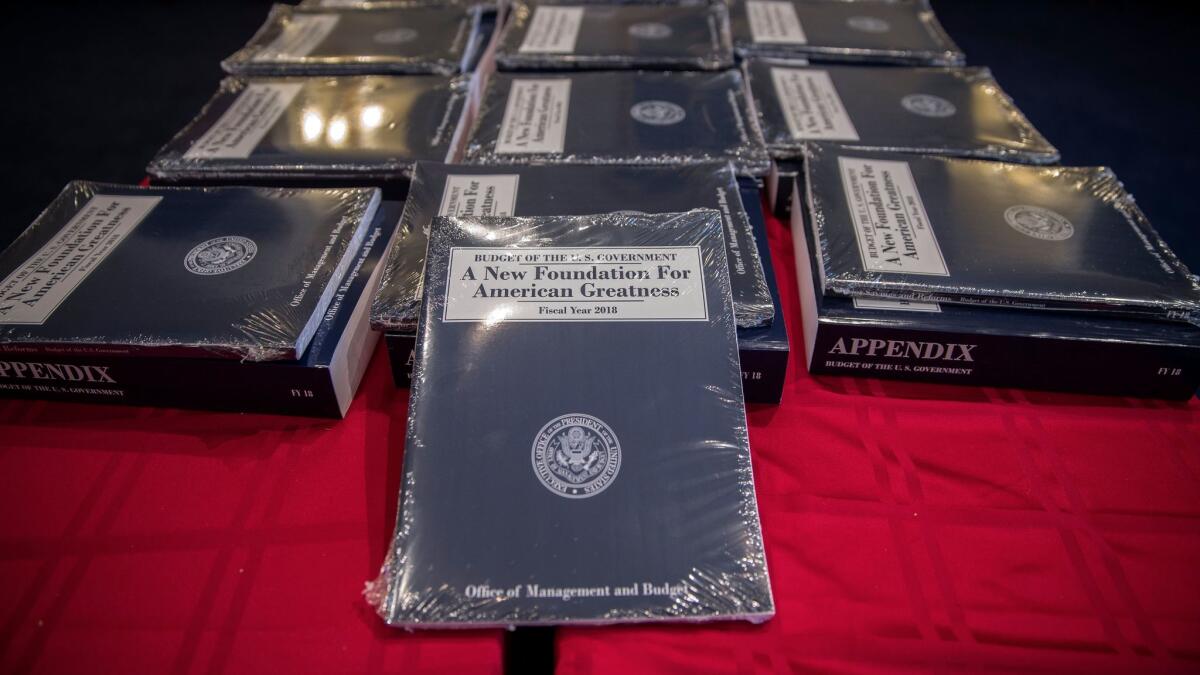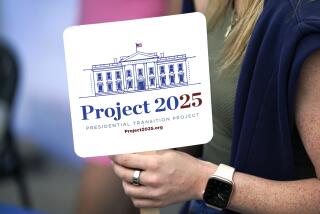Editorial: Surprise, surprise: Trump’s budget punishes the sick and the poor while rewarding the wealthy

President Trump has set one goal that all Americans can get behind, and that’s making the sluggish U.S. economy grow faster. Yet key parts of the $3.8-trillion budget he proposed Tuesday abandon that goal, seeking instead to cut federal spending at the expense of the long-term strength of the economy and the American people. That’s particularly evident in the cynical and counterproductive approach the administration is taking toward the poor.
One factor holding back economic growth is that too many working-age Americans have fallen out of the labor force. The administration’s proposed budget for the fiscal year that begins Oct. 1 tries to tackle that problem, as well it should. But rather than grapple with some of the challenges underlying the disappearance of millions of Americans from the workforce — in particular, the technological changes and globalization that have caused so many blue-collar and middle-class jobs to evaporate, and the gap between the education and training Americans have received and the skills demanded by today’s employers — the Trump budget seeks to force people back into the workforce by making it harder to obtain or keep food stamps, Medicaid and Social Security disability benefits, while reducing federal support for welfare and children’s health.
The crackdown on the neediest and most vulnerable seems even more craven when considering the billions Trump’s budget would shower on defense, border security and tax cuts for high-income Americans, corporations and partnerships.
One clear lesson from the welfare reforms enacted in 1996 is that states cannot force-march people out of poverty — they have to provide both the right incentives and the necessary tools to help people overcome significant impediments to gaining and holding a steady job with a decent wage. Ignoring that lesson, the Trump budget would invest in fewer of those tools, including after-school programs that help lower-income parents go to work, subsidies to make healthcare affordable, career and technical education and work-study programs.
Although administration officials say they’re promoting federalism and state flexibility and “the dignity of work,” those are all merely pretexts for cutting the federal safety net deeply enough to give the budget proposal a patina of fiscal responsibility. It’s just a patina, though; the books are cooked with overly rosy projections of economic growth and an assumption that the “largest ever” tax cuts Trump is seeking will not, in fact, lower federal revenue.
Deficits and a growing federal debt may require us to make tough choices about spending and revenue. How do we adapt to an aging population? What’s the right approach to defense in an era of new threats? How do we rein in the growing cost of medical care? The administration has punted on the tough choices, however, in favor of the politically easy route through the poor and the disabled.
At a briefing Tuesday, White House budget chief Mick Mulvaney said, “Yes, you have to have compassion for folks who are receiving the federal funds, but also you have to have compassion for the folks who are paying it.” It’s clear where his sympathies lie in a budget that pits taxpayers against the poor.
Follow the Opinion section on Twitter @latimesopinionand Facebook
More to Read
A cure for the common opinion
Get thought-provoking perspectives with our weekly newsletter.
You may occasionally receive promotional content from the Los Angeles Times.










